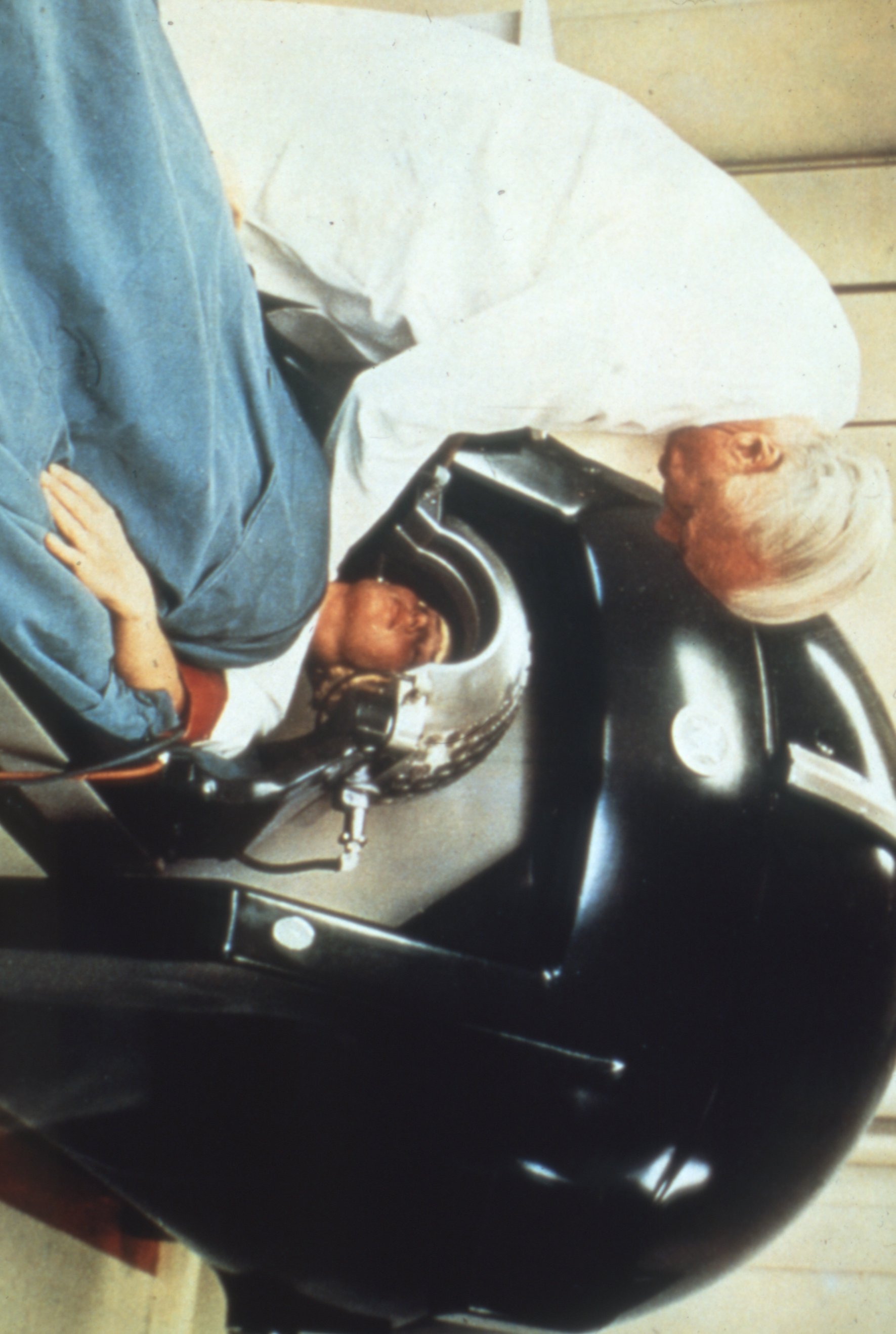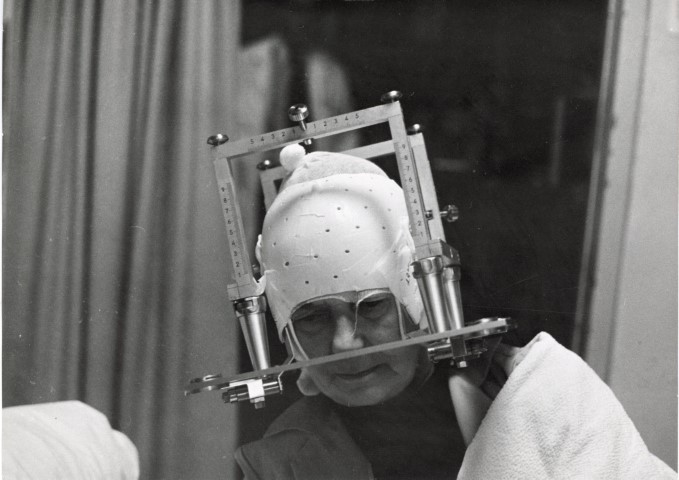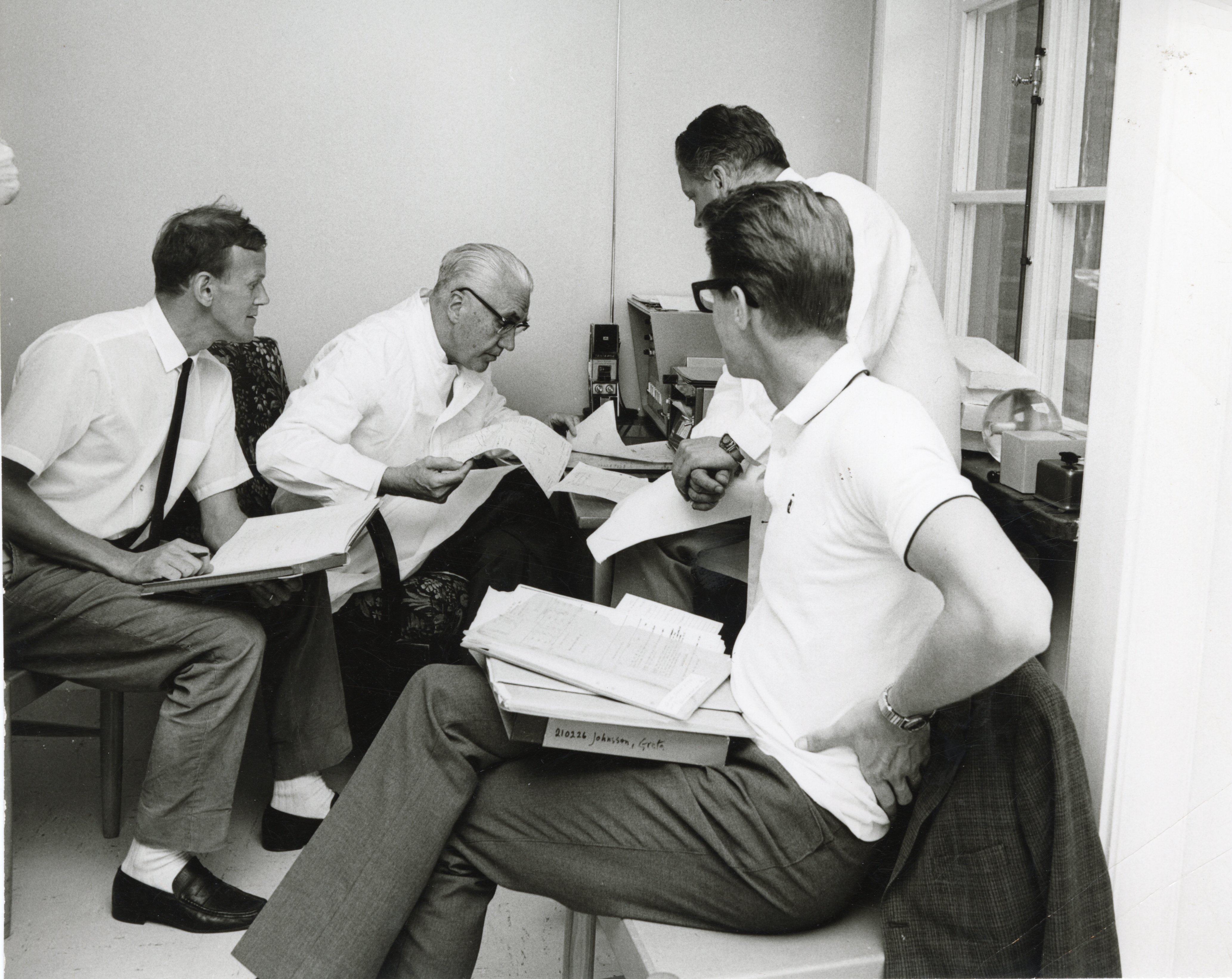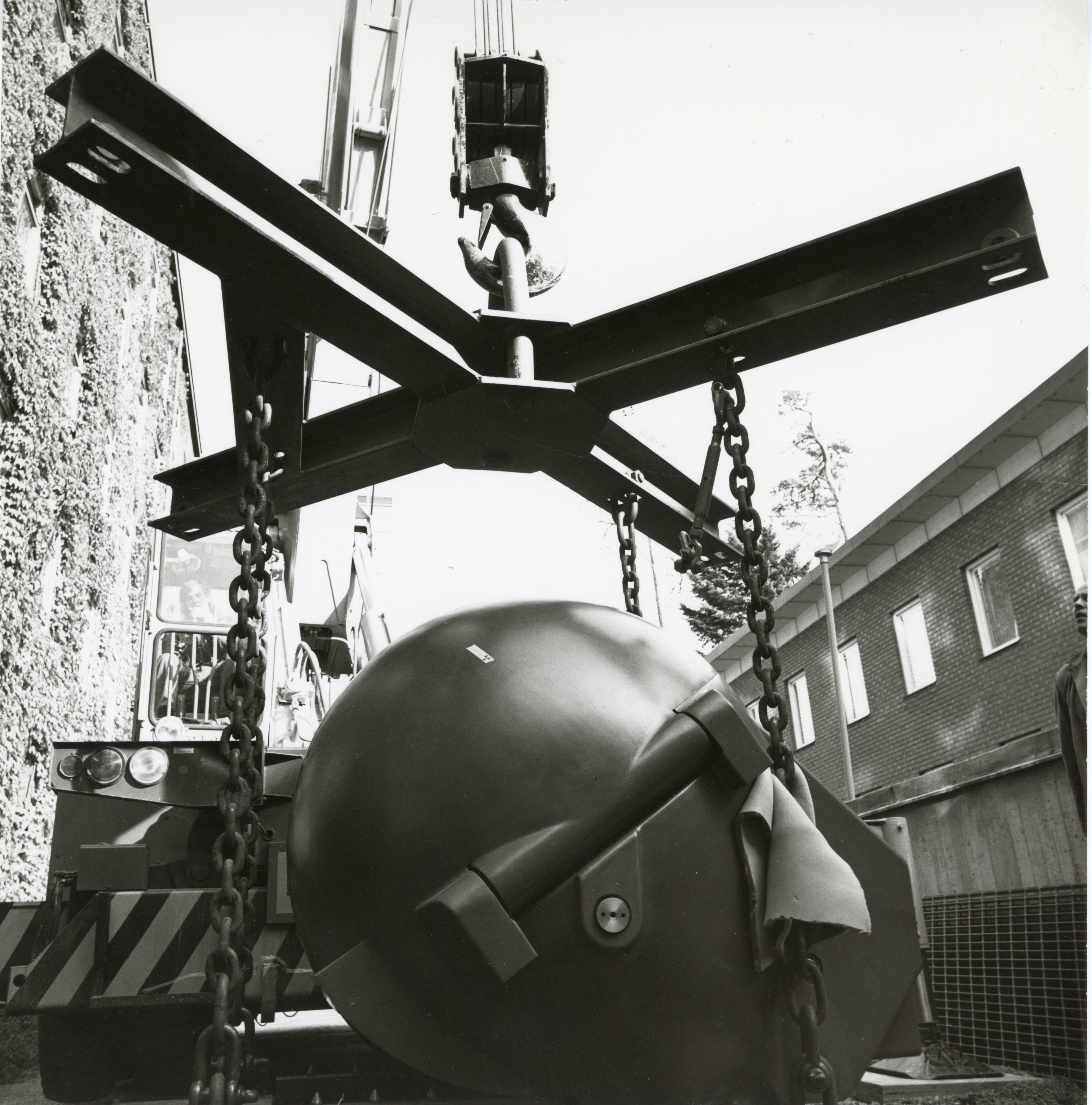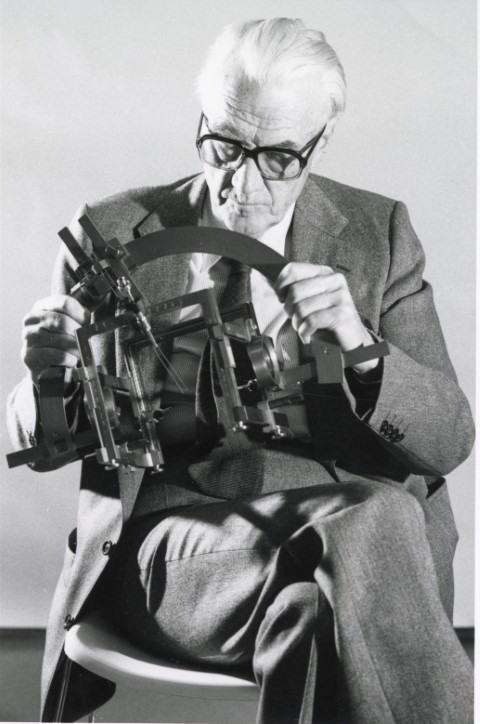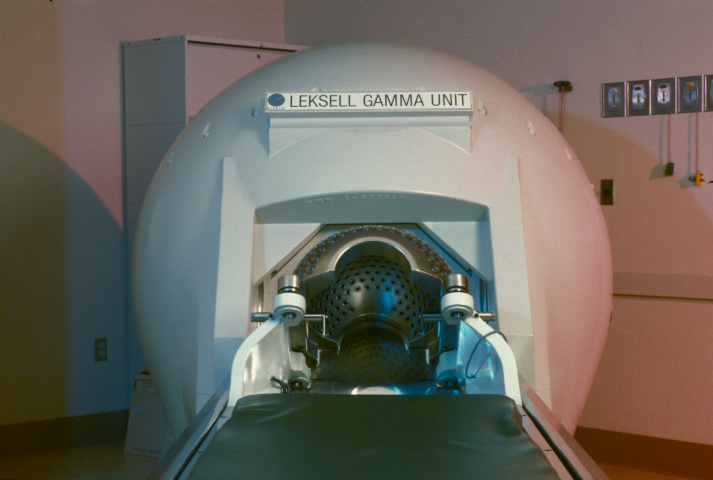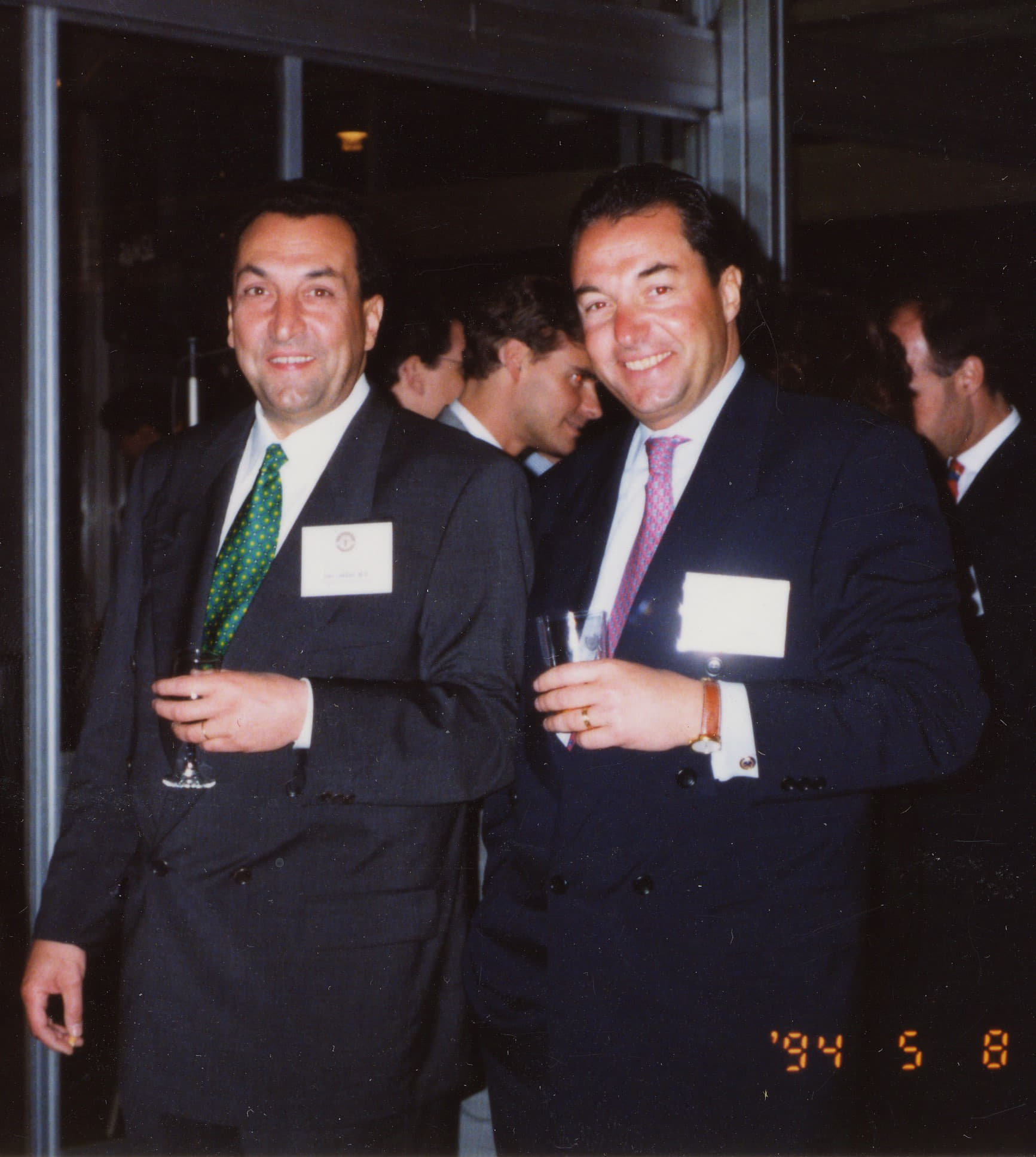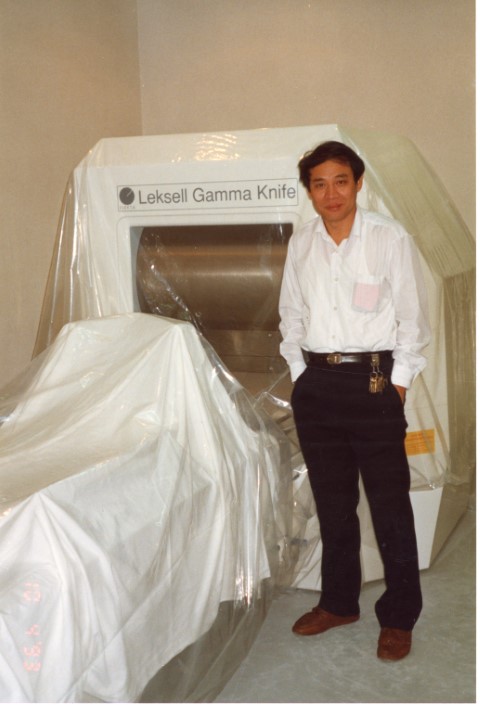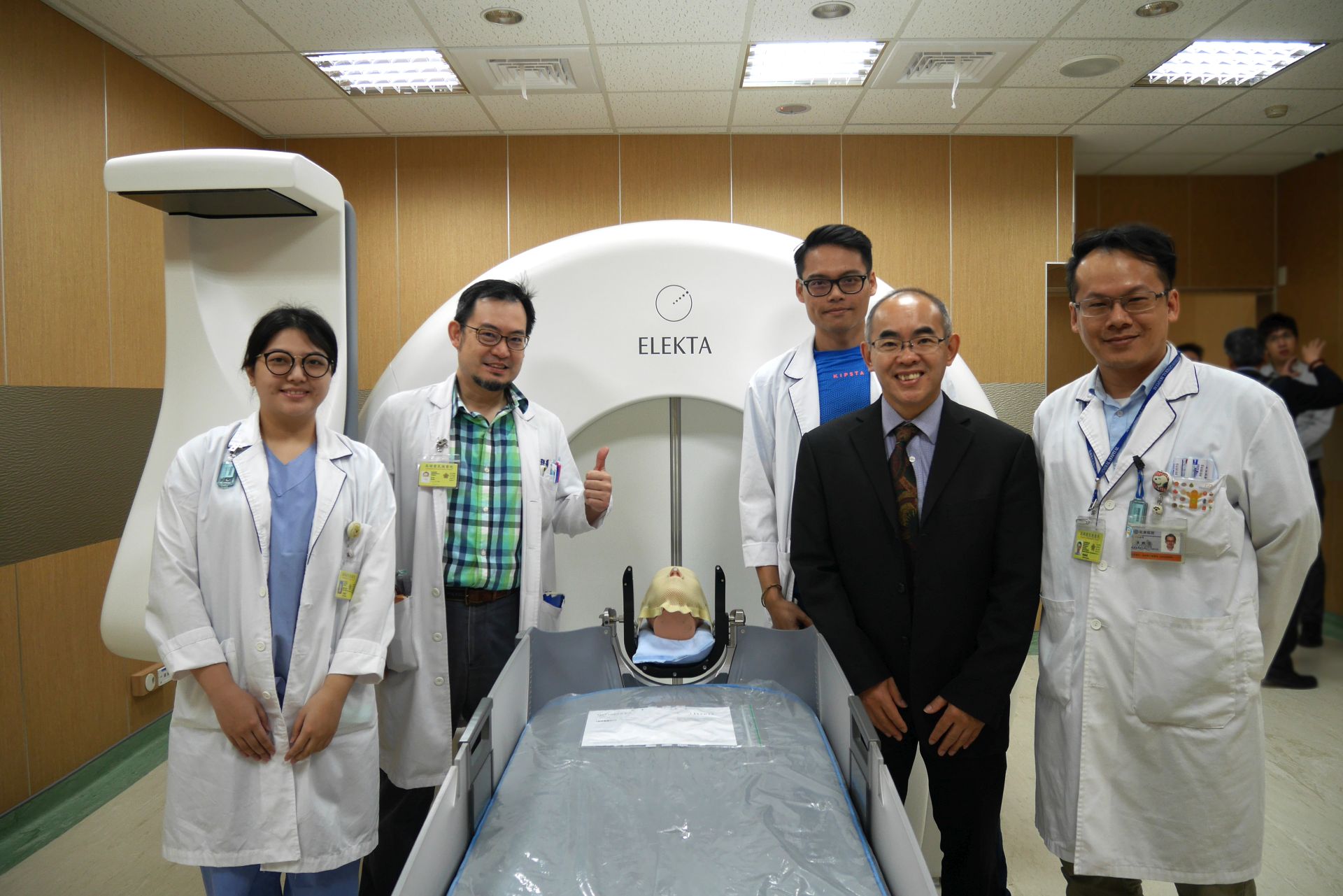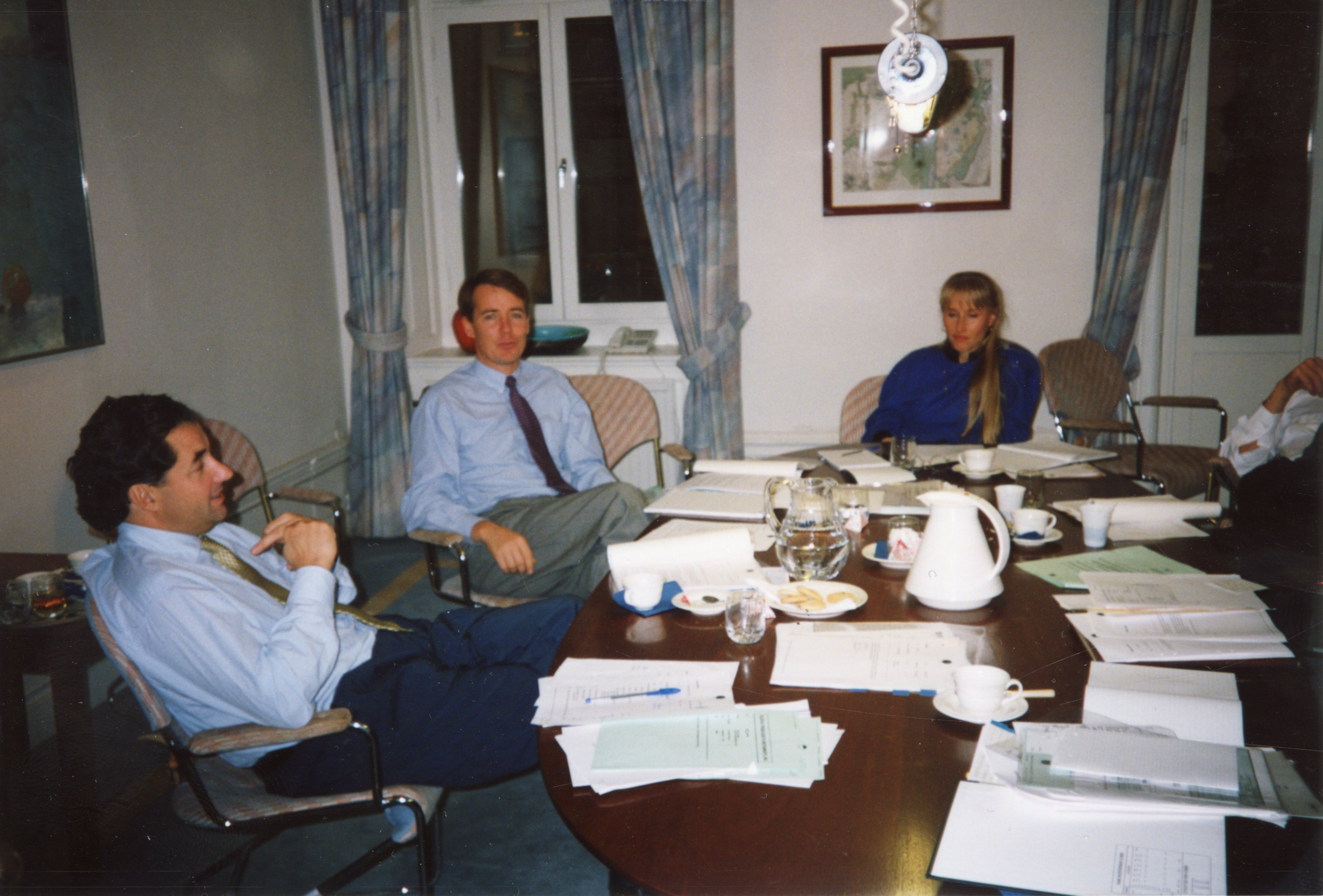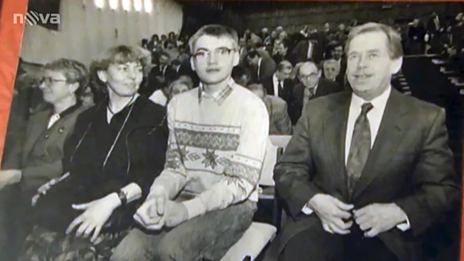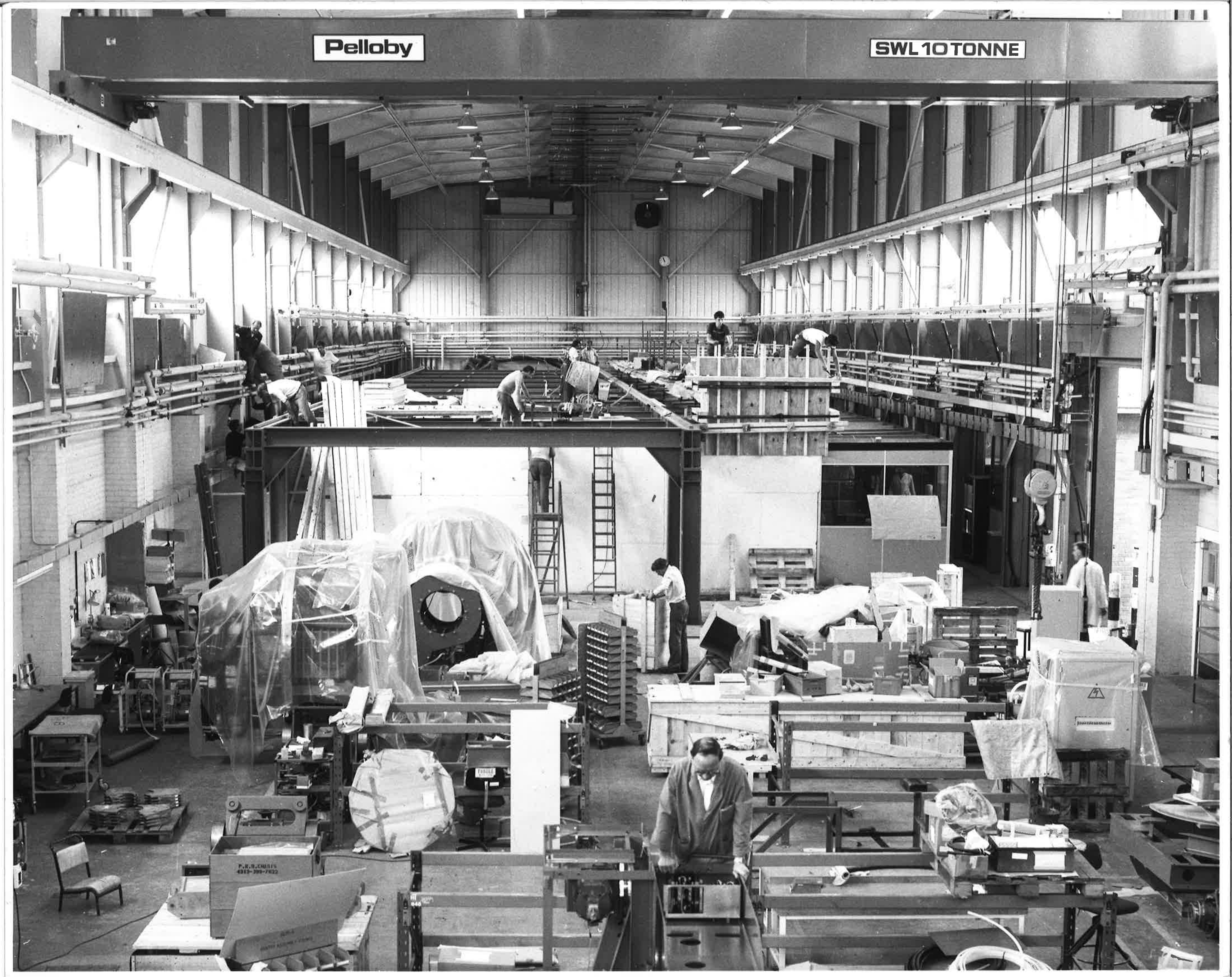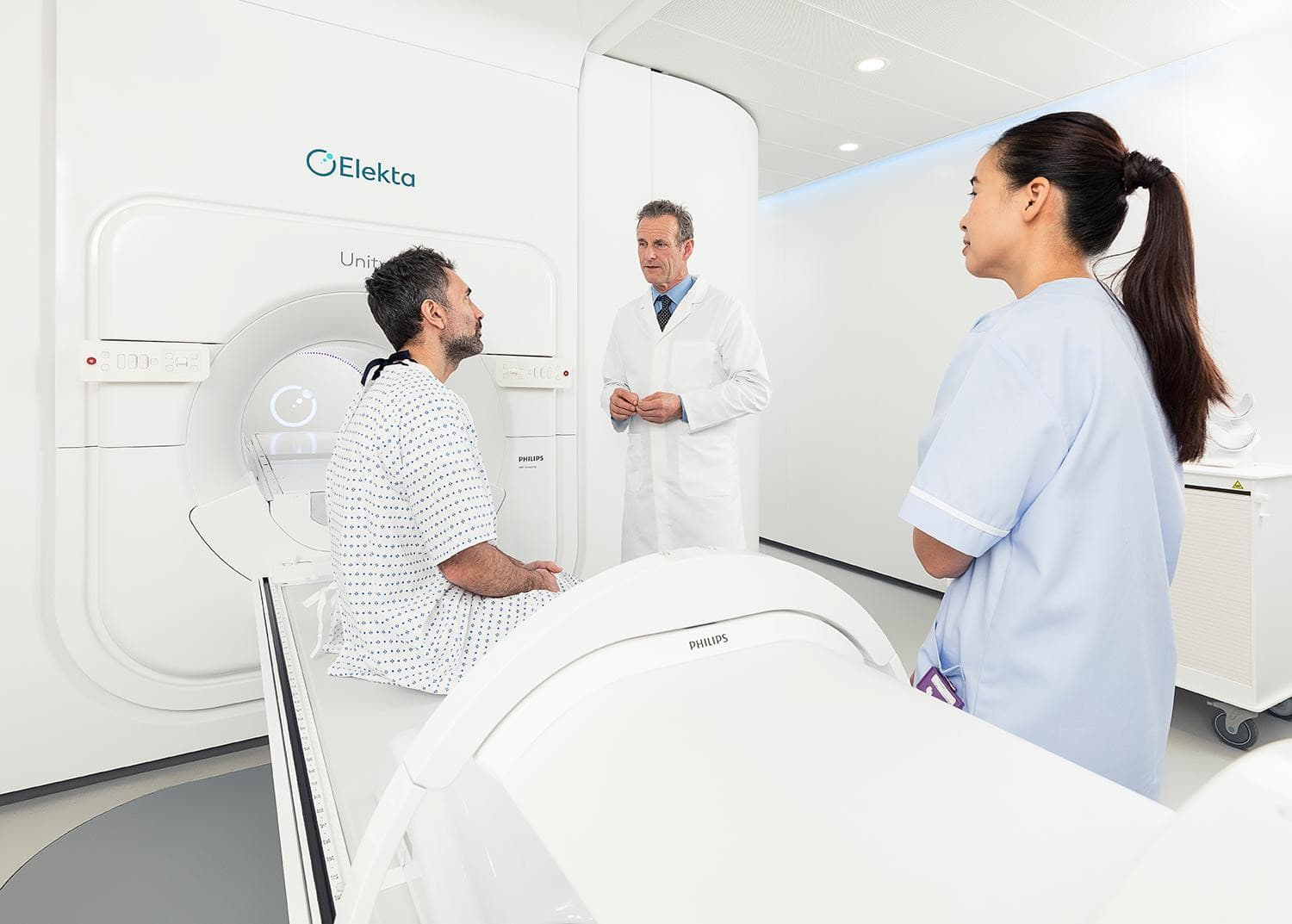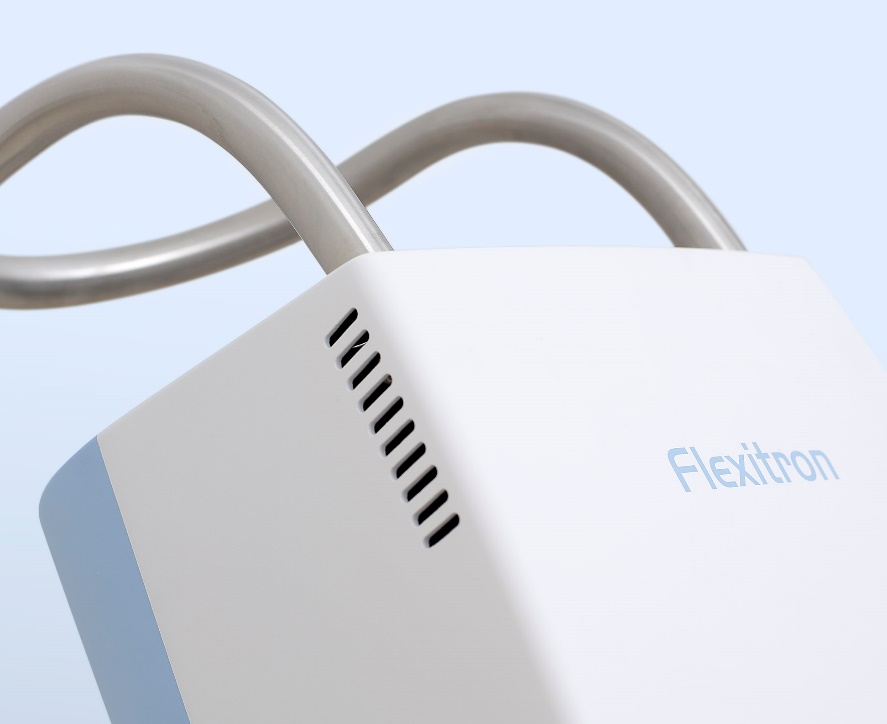A Modern Approach
2005-2022
Reading time: 4 minutes
As it was for Lars Leksell, modern cancer treatment is about precision and visualization. But today, there are more technologies—and software ties it together, for a cancer treatment that older generations only dreamed of. What could the future hold?

By 2005, Elekta had regained its momentum and corporate self-confidence. The long years of integrating the radiotherapy and radiosurgery businesses, of rebuilding the sales funnel after the Asian financial crisis, and of divesting non-core divisions had finally paid off. The company was now back on solid ground. In May 2005, Larry Leksell, the company’s CEO from the start in 1972, handed over the reins to company veteran Tomas Puusepp. Tomas took a company with more than 3.5 billion SEK in sales and some 1,700 employees worldwide. Larry assumed a role in which he, as a main shareholder, could focus more on the company’s long-term strategy.


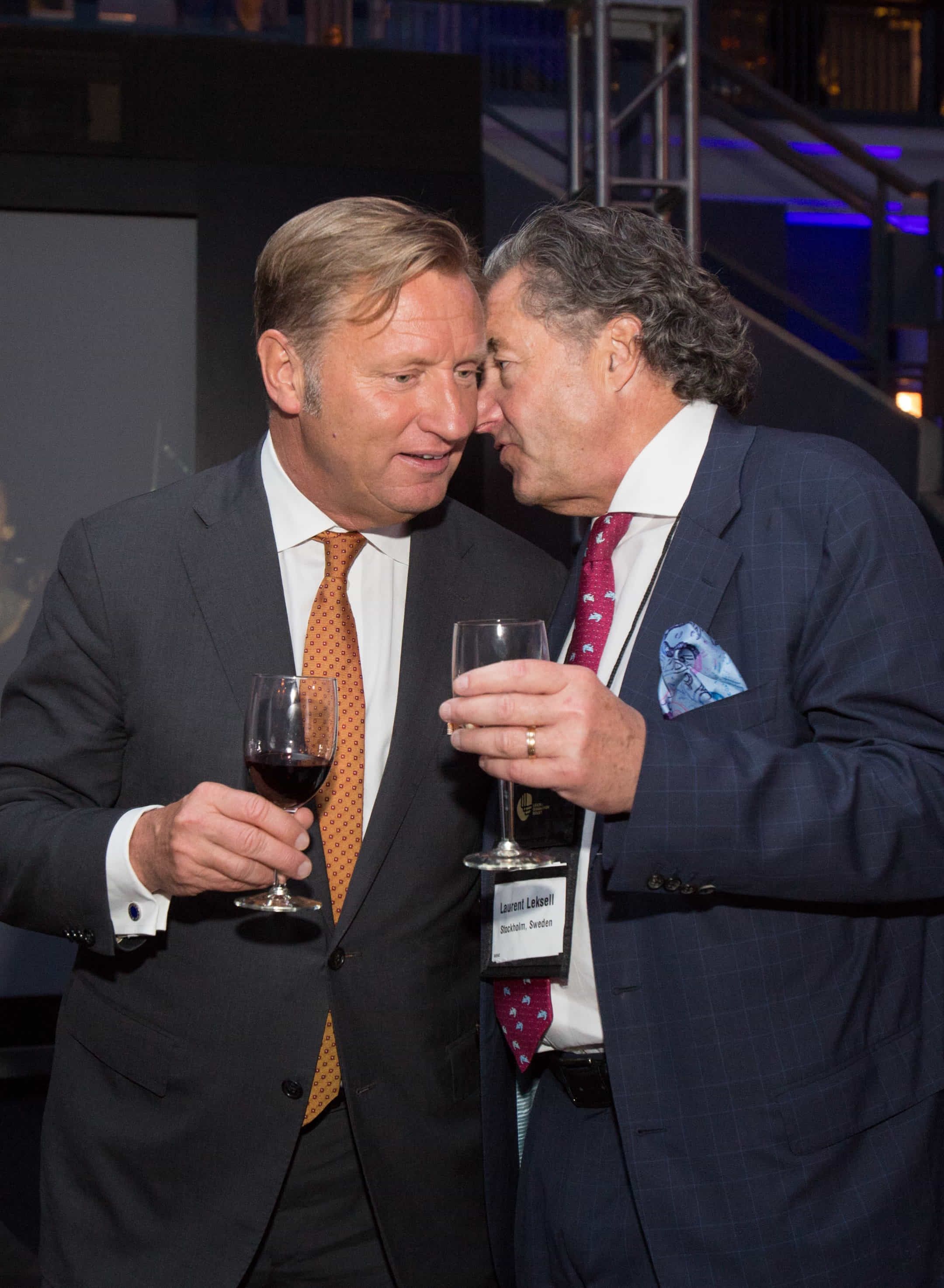
Geographically, Elekta was spread around the world. Product-wise, it was firmly established in the cancer treatment field, offering both radiosurgery, based on its foundational product Gamma Knife, and radiotherapy, via the linacs-based products that the once-acquired outfit in Crawley produced. Elekta had a solid hardware platform and sales were growing, not the least outside of the US, its otherwise main market.
But it lacked one thing: a complete software suite for managing patient workflow.
There was of course software that ran linacs and Gamma Knife systems. But to properly use those machines, Elekta’s clients, such as clinics and hospitals, also needed to keep track of where in their treatment plan each patient was. And during the course of their treatment, patients generated an abundance of data, in the form of journal entries, treatment plans from various physicians, scans, images and much more. With different IT systems at each point, it took highly skilled technicians and physicists at radiotherapy departments to ensure that the entire patient picture was available. Clearly, here was a market need.
Elekta, as well as its major linac competitors such as Siemens (Germany) and Varian (USA), tried to offer systems that handled this to hospitals, clinics and other customers. But their offers were built on hodgepodge combinations of various software solutions, from a multitude of software vendors.
Enter IMPAC!
California-based IMPAC was one such oncology management software company. It was founded in 1990 in a garage in Mountain View by Jay Hoey, David Auerbach and Joe Jachinowski, three previous Varian-employees.
Jay Hoey explained: “When we started, there were a lot of individual software applications. One for scheduling, one for patient registration, another for billing, medical records, digital film. But in a clinic, it’s very much a process where the steps that these individual applications handled all depended on each other. It’s like paper dolls, one hits the next, which hits the other … So we started building software systems that had all these features bundled together.”
In little over a decade, IMPAC had grown to 110 people across the US, and had almost 80% of US cancer clinics as customers. The company had become such a big player in the field that Varian had in fact tried to acquire the company, but the deal fell through at the last minute when the US government stopped it under anti-trust legislation.
One company’s loss became another’s gain. Elekta saw in IMPAC not just a chance to bring in-house the software solutions that Elekta’s clients were needing, but also to grow its client footprint in the US. And if nothing else, the failed Varian acquisition showed that the IMPAC founders were open to being acquired. In 2004, discussions of a partnership began, and by January 2005, Elekta announced that it was purchasing IMPAC.
“It was a critical acquisition for Elekta,” says Larry. “If it had not been for this, we would have been nowhere near where we are today in the oncology space.”
Within a year, Elekta launched its first own medical record and workflow automation system for oncology, dubbed Elekta MOSAIQ. The goal was to give doctors and clinicians, no matter where they were, access to a patient’s full oncology history in one place.
Today, 15 years later, the MOSAIQ software suite has made Elekta one of the world’s largest providers of oncology information systems. Key to Elekta’s success in this space has been the fact that MOSAIQ is not tied to Elekta products only, but connects to any linac and treatment planning system, including those from Elekta’s primary competitors.


And after initially focusing on connecting individual systems, today’s software focus in on connecting equipment, so that data can run back and forth, often during treatment. This enables more automation, the third mantra in today’s industry, in addition to “more precision” and “more visualization.”
More acquisitions, more growth
With Gamma Knife, Elekta essentially invented the field of radiosurgery. It was a tool that could be applied to many indications in the brain, many more than just cancer. The company’s focus on cancer grew over time though and by the early 2000s, the company was firmly established in the cancer treatment field. And it continued looking for ways to grow its arsenal against cancer. This meant, among other things, continued acquisitions. Medical Intelligence, a German company specializing in how to position patients during treatments, joined the group in 2005. This resulted in Elekta Axesse, a highly accurate linac for stereotactic radiotherapy. In 2006, Elekta became the main shareholder in BMEI, China’s biggest supplier of radiation therapy systems.
The company’s software focus remained. 3D Line, an Italian company that developed treatment planning systems for stereotactic radiation therapy and intensity-modulated radiation therapy, was acquired in 2008. That year, Elekta also bought CMS, a US-based developer of radiation treatment planning software.
And the company continued to develop Gamma Knife, its foundational product. In May 2006, it launched Perfexion. This newest version replaced the four different collimator helmets that were used during a treatment with a single one, offering better comfort for both patient and staff. Perfexion also automated more of the actual treatment process, using new software to remove many manual steps and thus lowering the risk of human error.
And the linac-based products also advanced. In 2012, Elekta launched Agility. Dee Mathieson, an industry and company veteran in charge of product quality at Elekta, explained its benefits: “It had a brand new multi-leaf collimator, the device used to delineate the beam so that it followed the shape of the target area. Our previous MLCs had about 80 leaves, but this one had 160, allowing us to shape even more precisely.”
Geographically, the US and Asia continued to be key markets, but compared to the early years, Europe was now on par. Unlike many other medtech companies, Elekta built its global presence by establishing local offices and know-how. Take for instance China, so long key to Elekta’s success. The company opened its first office there in 1984. Throughout the years, it maintained its presence in the country. The 2010s saw a growth phase in China, when both production and sales increased there, and by the early 2020s the company had over 800 people employed there.
Brachytherapy, an inside-out—and new—approach to cancer treatment
Whereas the acquisitions of the early 2000’s focused on extending Elekta’s offer within traditional radiotherapy, the 2011 purchase of Dutch company Nucletron marked an extension. By virtue of Nucletron, Elekta entered the field of brachytherapy.
In brachytherapy, instead of beaming radiation from the outside, a sealed radiation source was placed inside the patient, next to or even inside the treatment area. The benefit was of course that the radiation was almost entirely confined to the tumor area. Brachytherapy was introduced in the early 1900s at the Curie Institute in Paris but had not gained momentum until the 1970s, when ways to shield staff from the radiation exposure that came with manually handling radioactive sources were developed. Another growth phase for brachytherapy followed in the 1980s and 1990s when MR imaging arrived and could give more accurate placements of the radioactive sources in the target area.
As a field, brachytherapy was interesting to Elekta, even if it only accounted for a small portion of all radiotherapy. It had a growing market and it fit well conceptually with Elekta’s heritage of precision radiation therapy.
Nucletron had been founded in the Netherlands in 1975 by Eric van’t Hooft. “You can think of him as a combination of Larry Leksell and his father Lars Leksell. A very clever engineer, but also a very clever businessman,” said John Lapré, today president of Elekta Brachytherapy Solutions, who at the time was an executive manager at Nucletron and held a PhD in toxicology. “It was Eric van't Hooft who took brachytherapy from an art into a science, making it safe as a treatment form for both handlers and patients, working with remote offloading and all the techniques we use today.”
Nucletron had actually been on Elekta’s acquisition radar back when Elekta eventually purchased Philips Radiotherapy Division in Crawley. You could say that the relationship already went way back when Elekta, in June 2011, announced that it was acquiring Nucletron. The acquisition mean that Elekta opened a fourth business area. In addition to oncology, neuroscience and software, it now also had brachytherapy.
“Consortium”, a recurring Elekta word.
Working in “consortium,” or collaborative projects that involved players from all aspects of a field, was an integral part of Elekta’s development. Of course, an influencing factor was the multidisciplinary approach that Professor Lars Leksell embodied when he first developed Gamma Knife. Another was the academic tradition that he brought with open publishing of all research findings, not just by the company, but preferably by people not at the company.
The Gamma Knife Society, created by Elekta as a forum for radiosurgery users to exchange best practices, embodied these principles.
A more recent example was the “MR Linac” consortium that Elekta established in 2012 with institutions from the medical, academic and business fields. The goal was to merge radiation delivery with real-time MR imaging into a single system—because, yes, Elekta had not given up on its longstanding ambition of providing visualization into the operating field during a treatment.
In the consortium, the linac hardware came out of Elekta’s outfit in Crawley and the necessary software from its primarily US-based software operations. But for MR technology, Elekta teamed up with Philips. Together they did the core research, development and engineering activities. Then the consortium’s other partners—university clinics, commercial cancer clinics and practitioners—gave input on the many clinical and workflow protocols that the project generated. All in all, this ensured that the radiation oncology clinics of the world could follow what was going on and react when needed.
The efforts of the consortium—which Elekta internally called the Atlantic Project—would emerge in 2018 as the Elekta Unity system. But first a few words about management.
New management times…
Since its foundation in 1972, Elekta had been managed by a tight-knit group of people. The fact that the company only had two CEOs in over 40 years—first Larry Leksell, then Tomas Puusepp—spoke to this continuity.
But in 2014, Elekta believed it was time to for both a generational and competence change. Niklas Savander, a top manager with Finnish telecom giant Nokia, was recruited as Elekta’s new CEO, when Tomas Puusepp stepped down after ten years. Unfortunately, Savander only came to stay with the company for a year. When the annual report for his first year came in, the results were much below what had been expected and he offered his resignation. Tomas Puusepp returned for a year as CEO, until a new CEO had been recruited. Which became Dr. Richard Haussmann, an industry veteran with many years at General Electric. Haussmann moved to Stockholm from his native Germany and cooled down what had started looking like a hot seat.
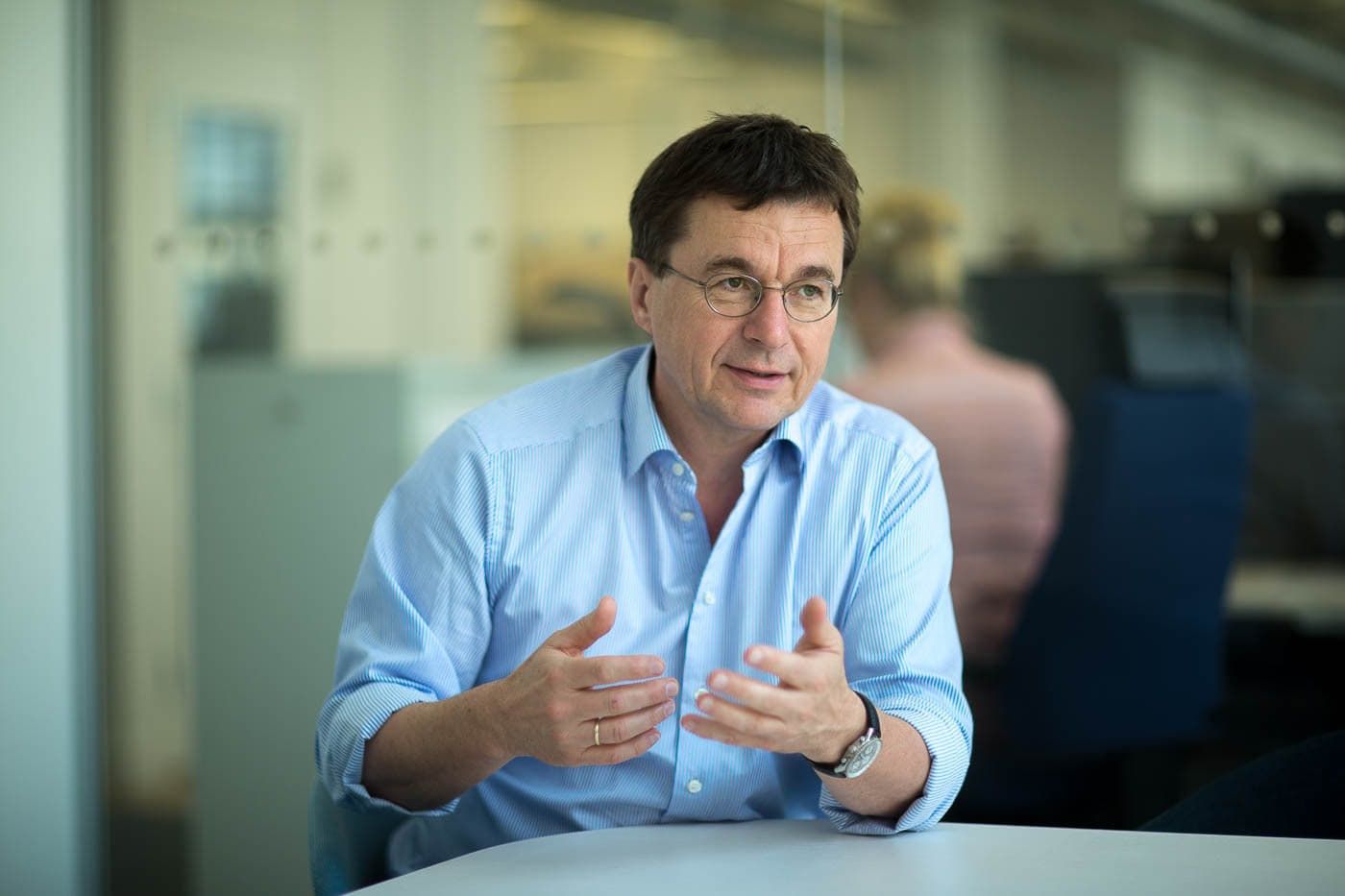
Continued development: Unity!
In 2016, Elekta launched the eighth generation of Gamma Knife. Called Leksell Gamma Knife Icon, the machine incorporated cone beam CT, enabling real-time imaging during the radiosurgical procedure. The new design allowed medical staff to fractionate the targets, useful when they were too large for single session radiosurgery—or when the targets were too close to sensitive structures, such as the optic pathways leading to the eyes. It also allowed patients to be held in position through a mask instead of using the classic frame fixation, which had been used ever since Professor Leksell’s first experiments in the 1950s.
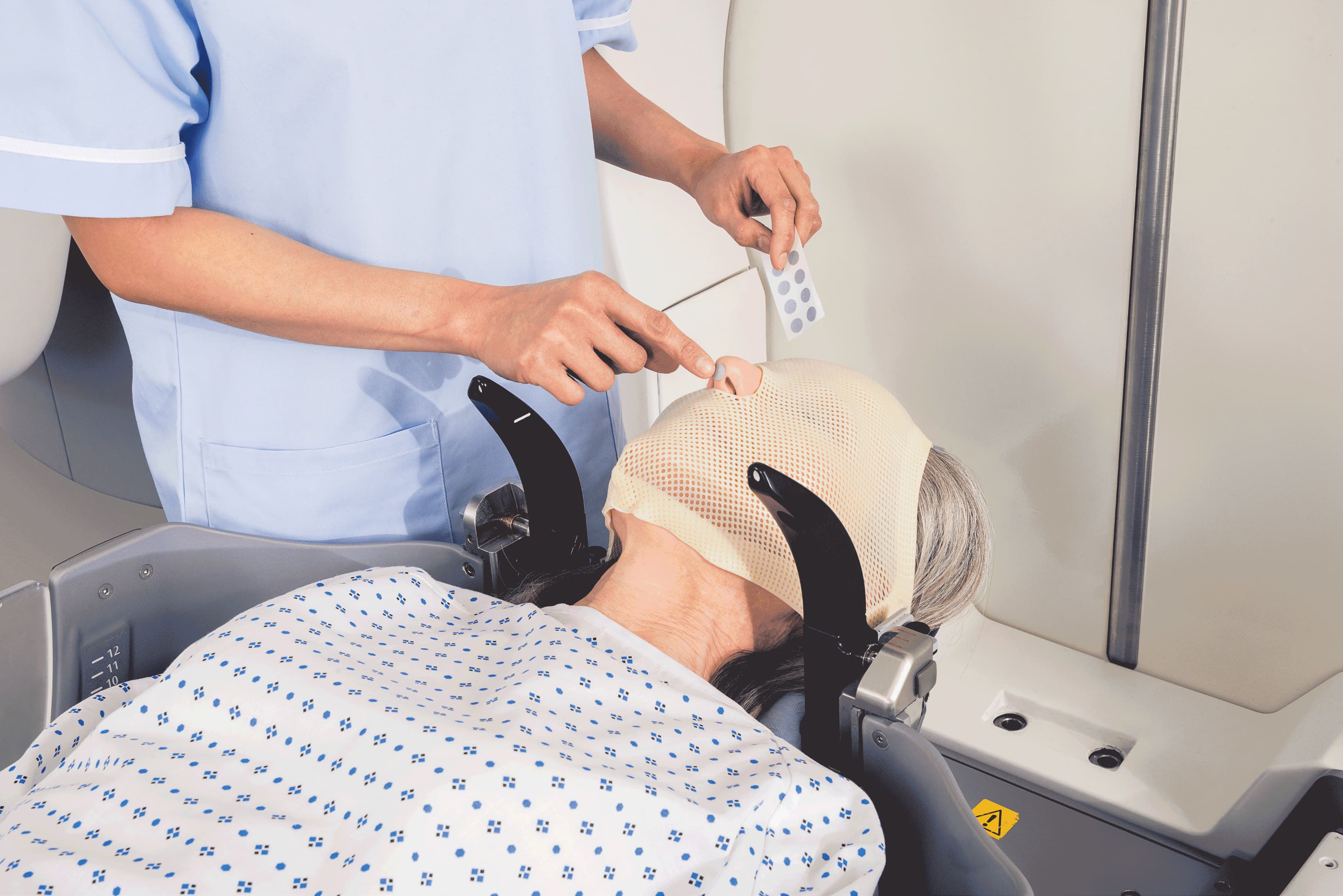

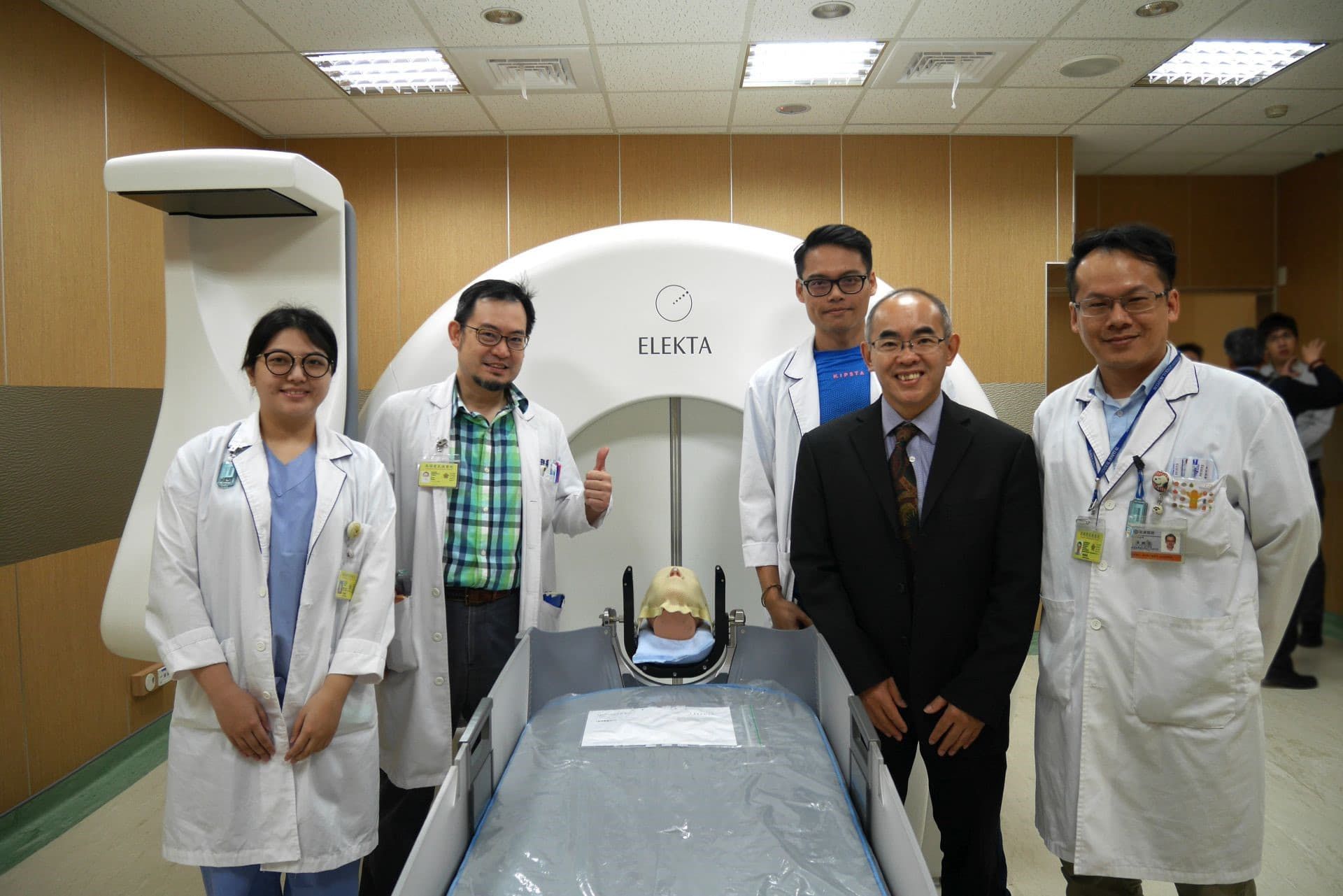
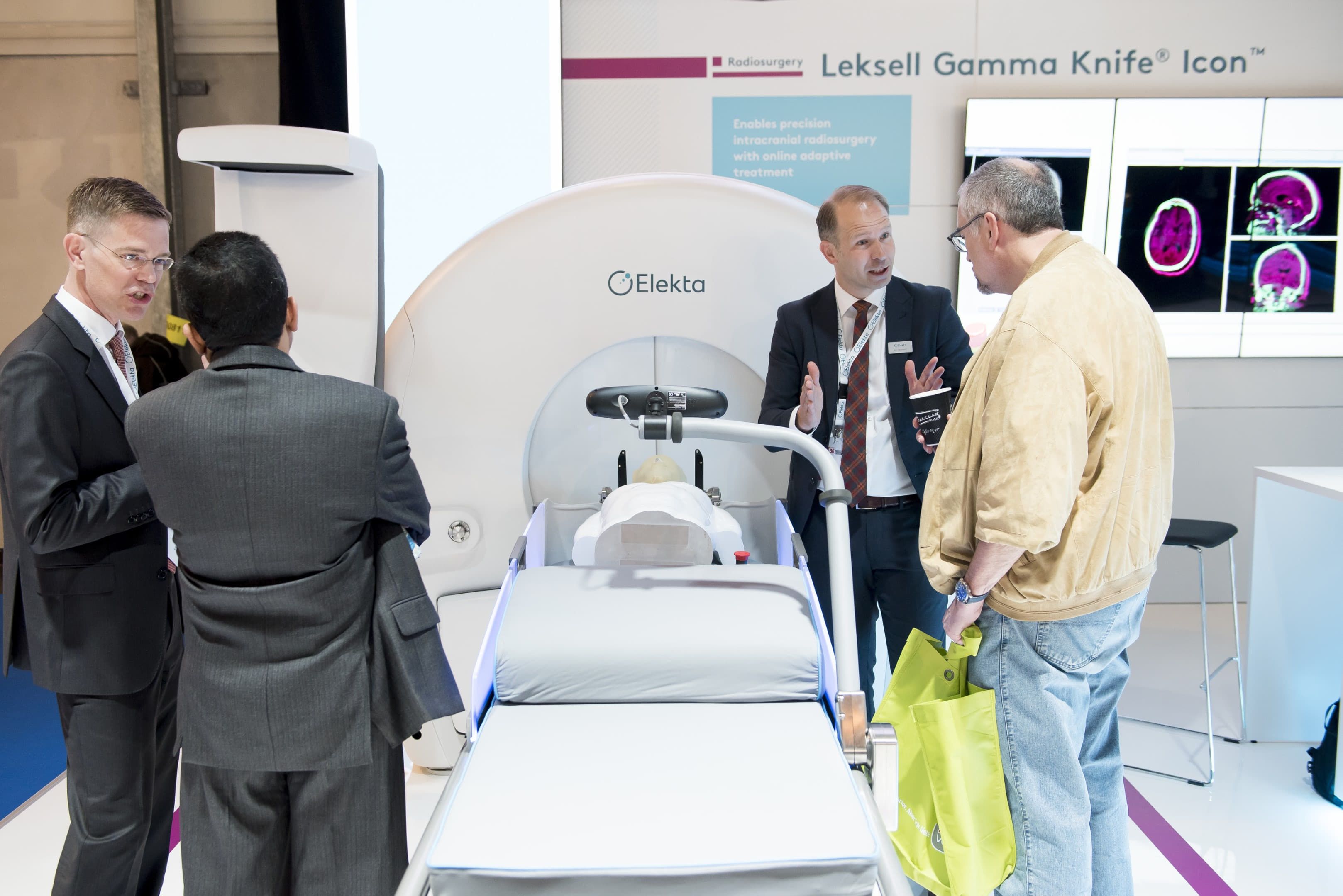
After this developmental step in radiosurgery, Elekta took a leap in radiotherapy in 2018.
That’s when the company launched Elekta Unity. The “Atlantic project” was now a ready product: an image-guided radiation treatment system that combined magnetic resonance imaging (MRI) and linear accelerator radiation treatment (linac) into one device. MRI and linear accelerator technologies had been used separately for years to diagnose and treat cancer. Unity managed to combine the two, which had required offsetting the MRI magnetic field’s effect on the linear accelerator's radiation beam.
Finally, Elekta had its therapy system that allowed clinicians to follow the treatment in the body as it was being delivered, and adapt as needed, an all but certain requirement in most cases. Tumors change positions in a body when a patient breathes, swallows or builds bowel gas. With Unity, a change in target position was immediately visible and the radiation beam could be adapted accordingly, thereby not harming healthy tissue surrounding the target area.
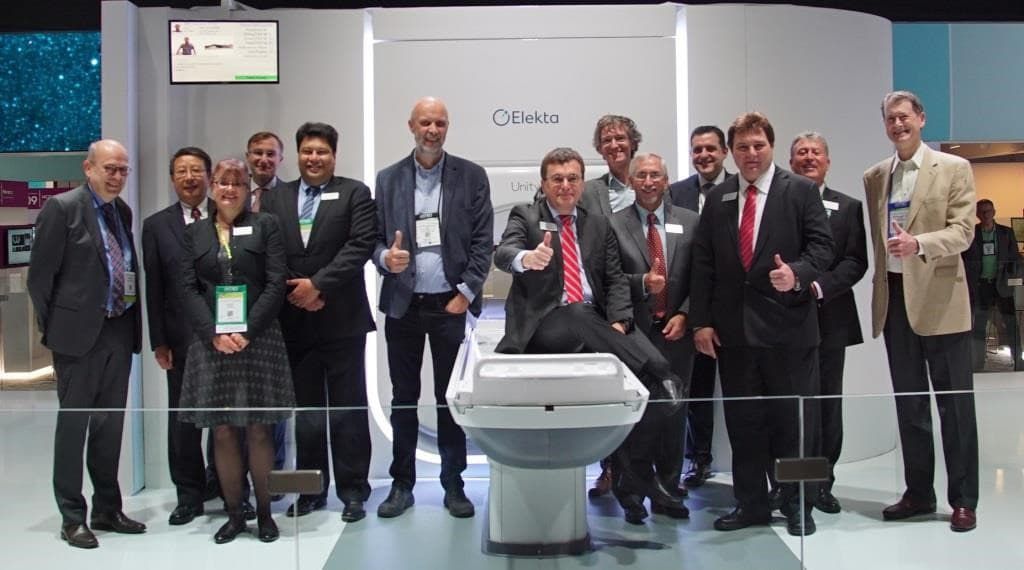
Dee Mathieson smiled: “One of the doctors at the University of Utrecht said it was like a new pair of glasses. You’re not treating a patient based on images that you took yesterday, but you’re looking inside the human right now, at where the cancer is, where the healthy tissue is and you’re collimating or shaping the beam as you go based on what you see. It’s precision. Almost Gamma Knife-style.”6
Unity was also, for the long-timers at Elekta, a sign that their earlier focus on image-guided surgery, which had been a drain on the company’s finances in the late 1990s, had not been a strategic mistake. It had just been too early. “In hindsight, I’d say that the IGS-work we did in the 1990s was probably 10–15 years premature,” said Larry Leksell.
In May 2020, Elekta reached a Unity milestone with an order of about 200 million USD from GenesisCare, Australia’s largest provider of cancer care. It meant that Elekta had passed its own target of 75 sold Unity-systems by mid-2020—because it was order number 80.
Like few others, Cathy Gilmore-Lawless could see Unity’s place in the Elekta timeline. She had joined Elekta in 1986, been instrumental in the company’s early US operations and the Leksell Gamma Knife Society, then left the company in the mid-1990s only to return in 2011. She said: “When I first joined, we were introducing the Gamma Knife, a disruptive technology. It was paradigm shifting, and took much education and overcoming lots of objections. Then we followed on with CT image guidance for the Gamma Knife, also a paradigm shifting technology. And now with the MR-Linac, once again it’s disruptive technology that is going to change the way radiation therapy is delivered. I have no doubt about that.”
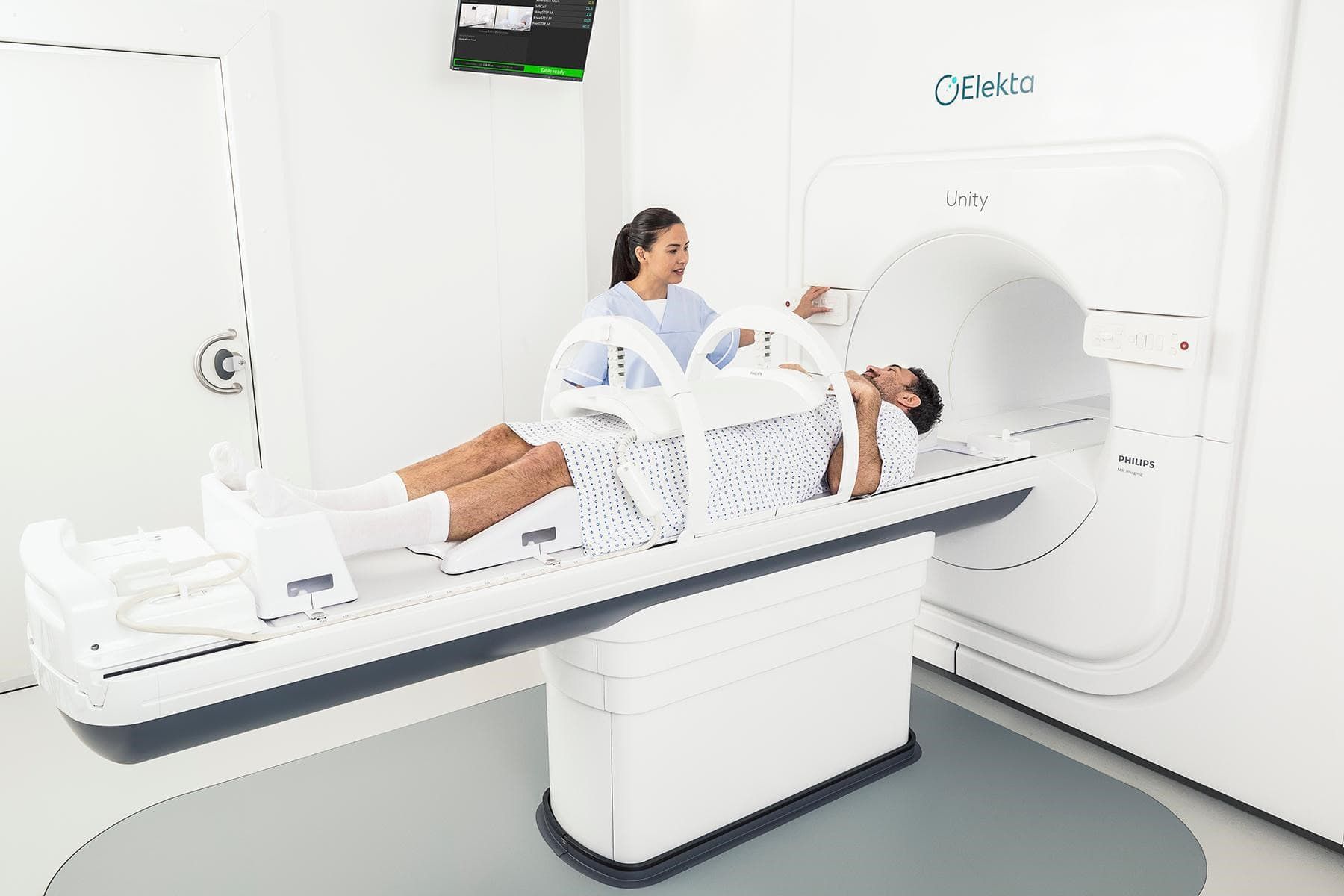
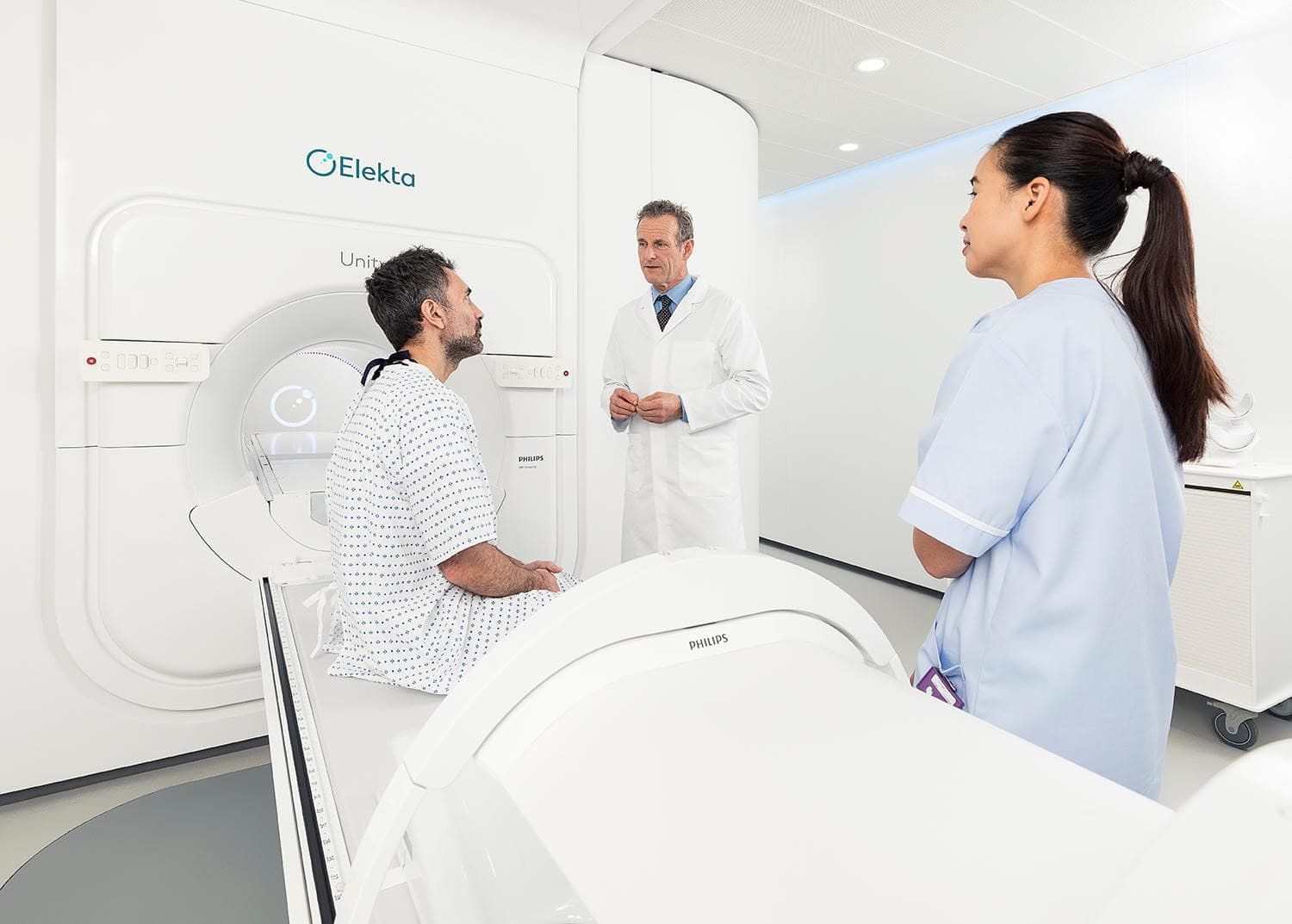
“Access 2025” and the Elekta Foundation
On 3 June 2020, Richard Hausmann stepped down as CEO after four years. Gustaf Salford, who had joined Elekta in 2009 and been its chief financial officer since 2017, took over as the company’s new, and fifth, CEO. A year later, Salford introduced the company’s mid-term strategy, called Access 2025. It was based on the company’s newly formulated vision of a world where everyone has access to the best cancer care.

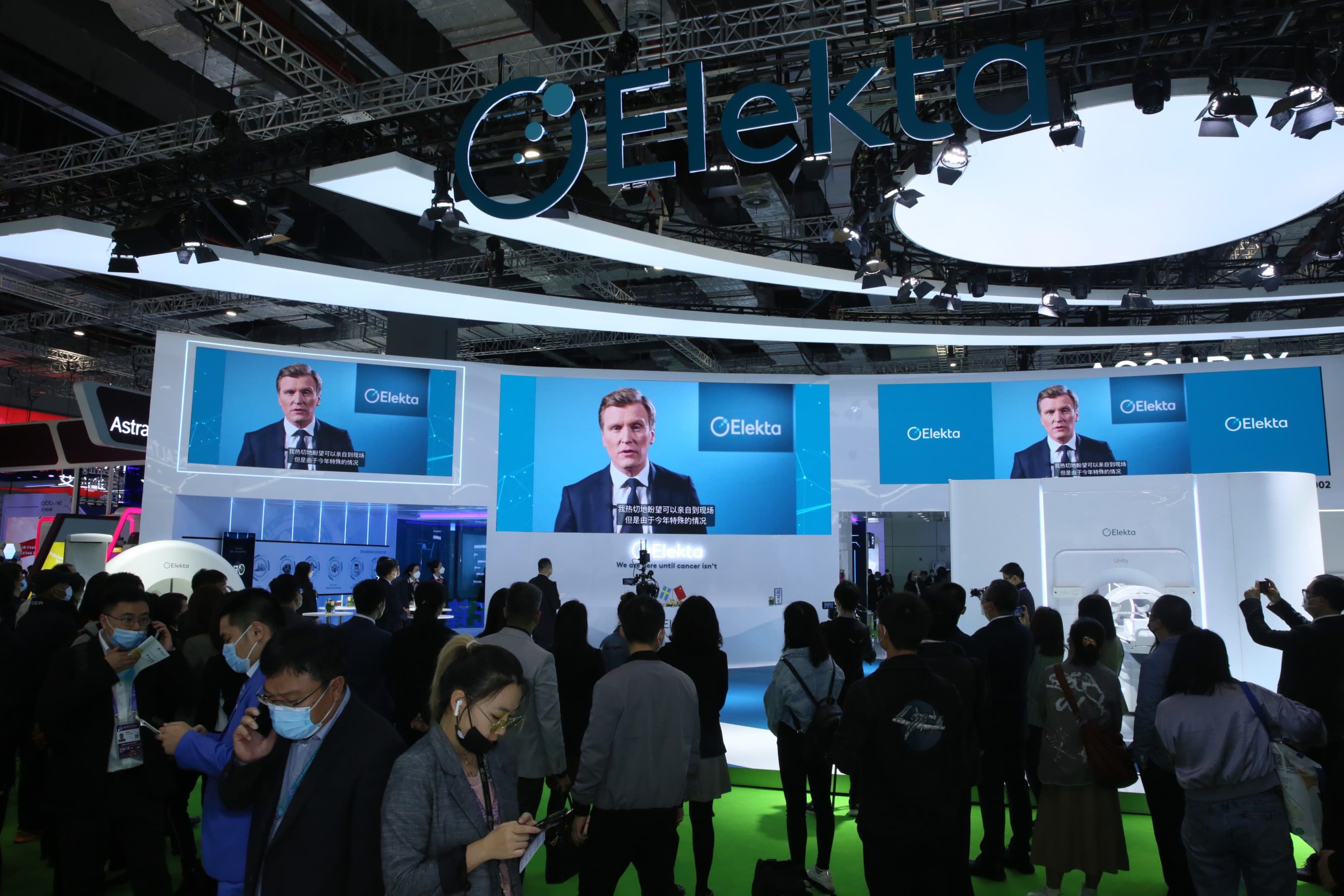

As a vision statement it upped the stakes for Elekta. Not only should the company sell to existing or developed markets, but it should also work for improved cancer care everywhere, including developing countries. But in another way, it built on Elekta’s long tradition of being proactive in providing quality care. Summarized CEO Gustaf Salford, “Our mission at Elekta is to not just provide technology; we provide hope for everyone dealing with cancer.”
And to support the “Access 2025” strategy came another piece of news in August 2021, when Larry Leksell, the company’s founder, long-term CEO and nowadays board chairman, announced the formation of an Elekta Foundation. Its mission is to improve access to cancer care in low- and middle-income countries. Larry Leksell explained the impetus: “The Foundation is an important and integral part of Elekta’s support of the United Nations social development goals. One area of particular importance is to improve women’s health and reduce the burden of breast and cervical cancer in Africa.”
Looking ahead…
Founded in 1972, as a sales vehicle for Professor Lars Leksell’s Gamma Knife, Elekta now turns 50 years. Professor Leksell, who passed away in January 1986, only saw the company’s first years. “I asked him during Christmas 1985, when we were all together," said his son Danny, "how many [Gamma Knife systems] he thought the world would need? He said maybe three or four.” Today, there are 354 active Leksell Gamma Knife centers in the world.
Elekta’s focus on precision surgery has also impacted its radiotherapy operations. Long gone are the days when Elekta thought radiotherapy was just palliative with no curable effects, unlike Gamma Knife. Today, linear accelerator technology achieves precision close to that of radiosurgery.
And over 4,700 employees worldwide work with developing and bringing to market Elekta’s products.
“It’s really grown up. I started when it was a tiny mom and pop. Literally Danny’s wife was working there. It really was a family business. And now it’s a multi-national, all grown up. It’s very, very different,” said Cathy Gilmore-Lawless.
Did you find it interesting?
Feel free to share it across social media!

